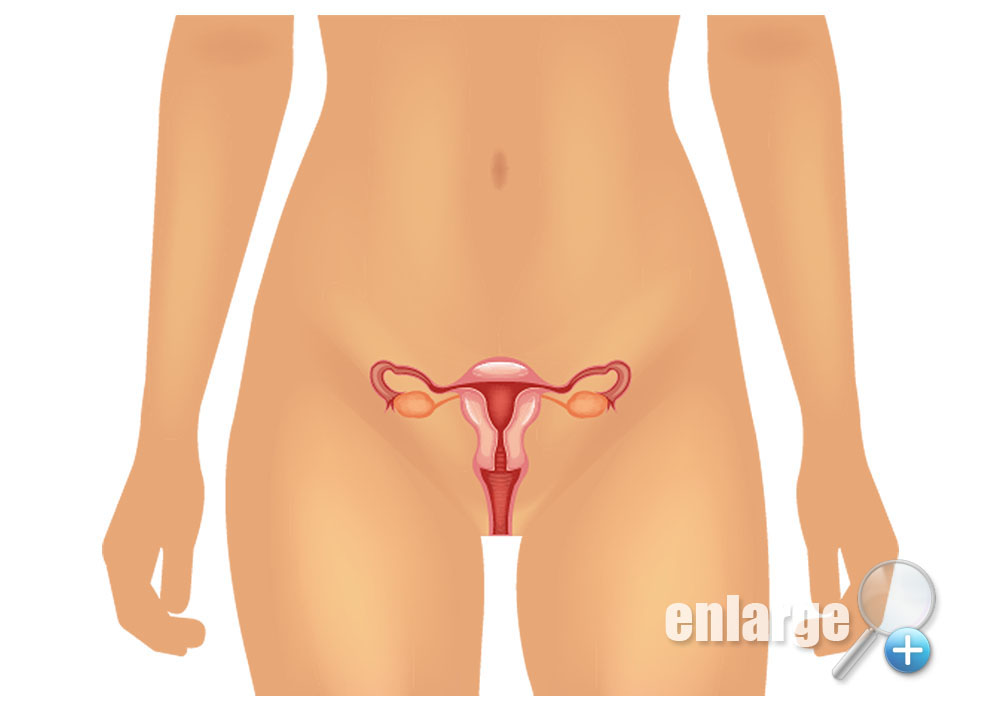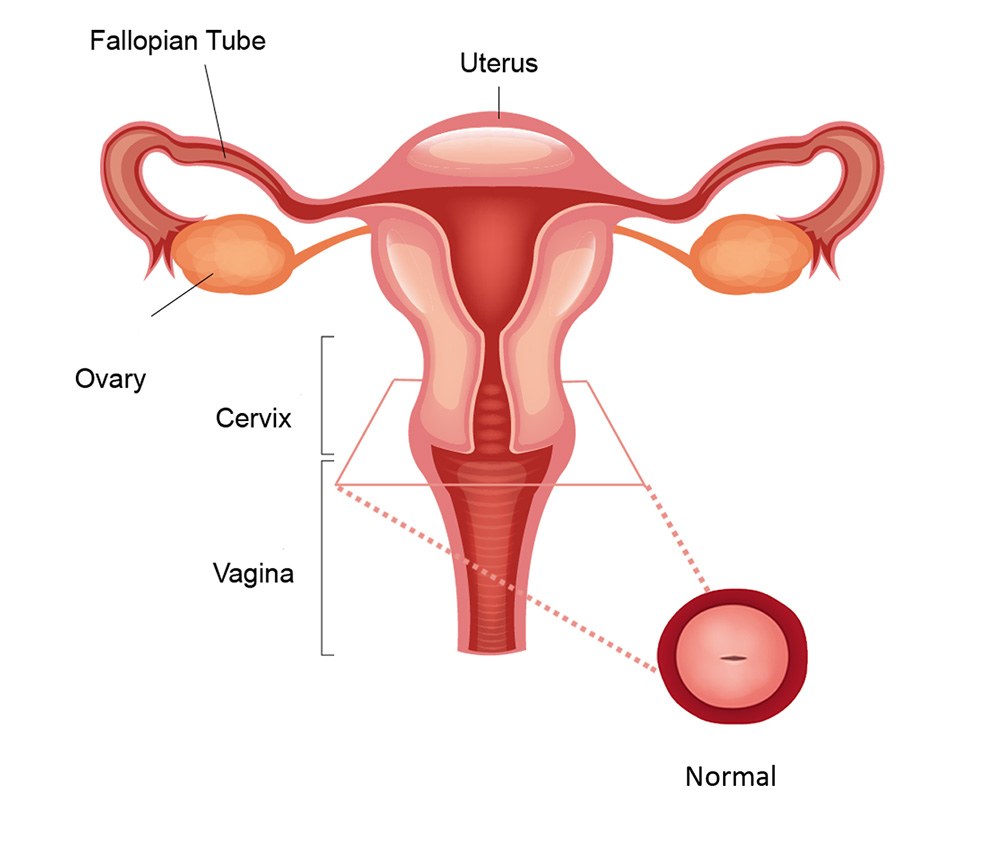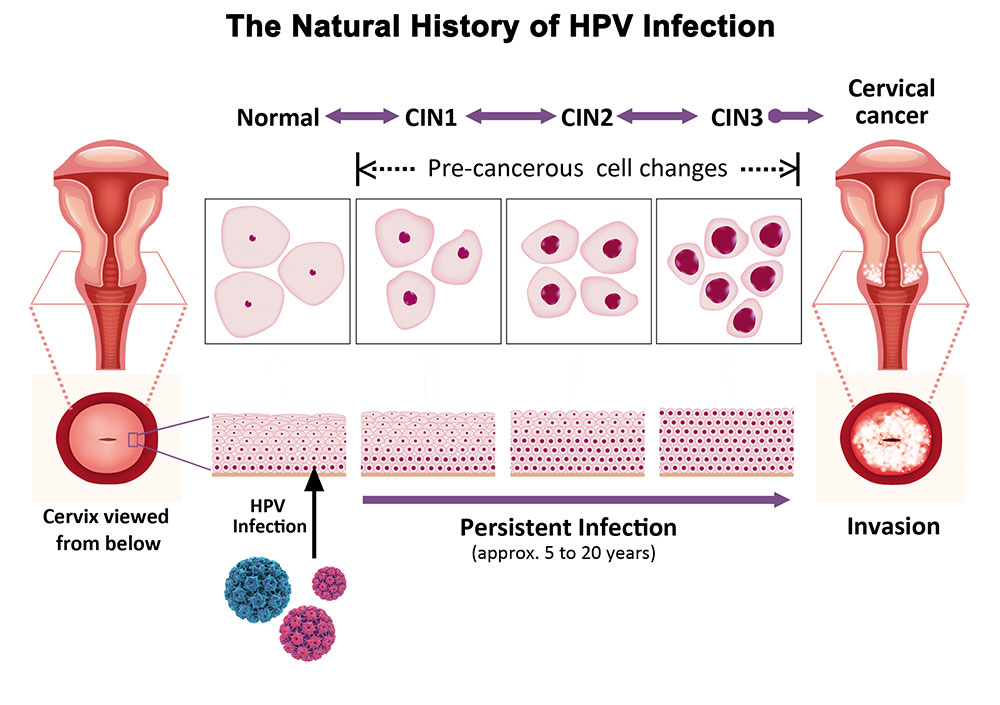What is Cervical Cancer?
Cervical cancer is a cancer that arising from the cervix, and can spread from the surface of cervix to other parts of the body.
Cervical cancer ranks as the seventh most common cancer among females in Hong Kong. In 2013, 503 new cases of cervical cancer were diagnosed. In 2014, a total of 131 women died from this cancer, accounting for 2.3% of female cancer deaths.
What is the relationship between HPV and Cervical cancer?
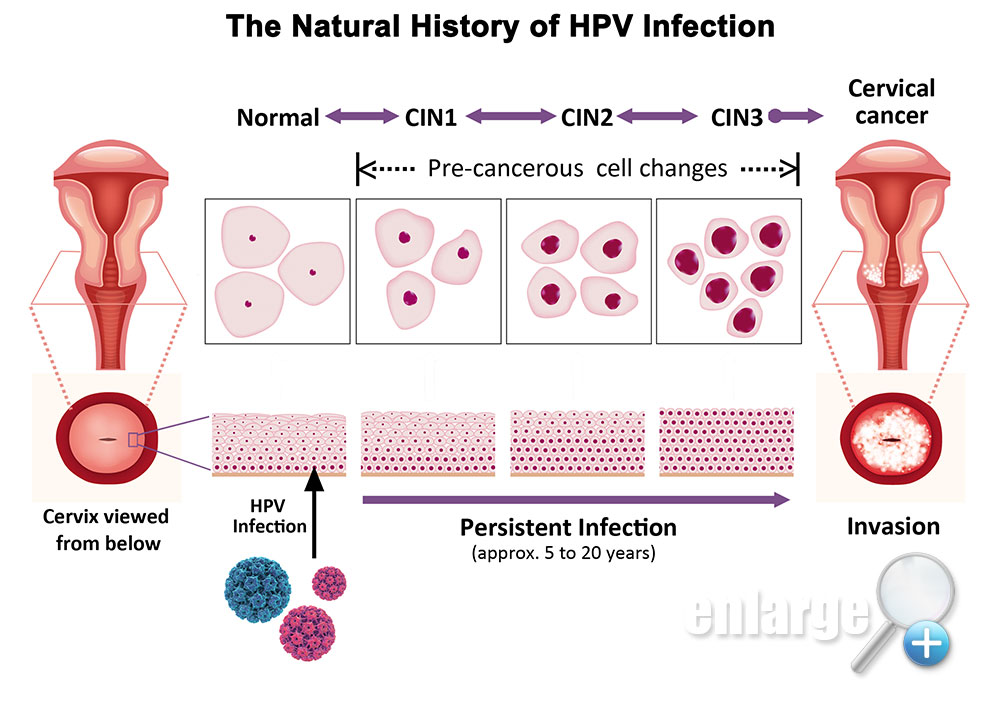
Cervical Intraepithelial Neoplasia (CIN)
CIN affects the skin of the cervix (epithelial cells). CIN is not cancer, but a pre-cancerous condition which is usually caused by persistent HPV infection of the cervix. Treatment may be needed to prevent development into cancer.
There are three types of CIN:
CIN 1 – abnormal cell growth in 1/3 of the cervix epithelial cell layer.
CIN 2 – abnormal cell growth in 2/3 of the cervix epithelial cell layer.
CIN 3 – abnormal cell growth in more than 2/3 or full thickness of the cervix epithelial cell layer is affected. CIN3 does not always lead to cancer; however, if it is not treated properly, it may progress into cancer over time.
Human papillomavirus (HPV) is a group of more than 200 types of related viruses. More than 40 types of these viruses can infect the genital area of men and women. HPV types are often classified into “low-risk” (wart-causing) or “high-risk” (cancer-causing).
HPV infection is commonly spread during vaginal or anal sex. Most people infected with HPV are asymptomatic and will clear the infection on their own. For a minority of cases, the virus is not cleared by the immune system and can cause serious health problems, such as genital warts. Also persistent high-risk HPV infection of the cervix can develop pre-cancerous cell changes. While the majority of these changes will regress to normal, some may gradually progress to cervical cancer over the years.
What is cervical screening test?
There are two screening tests that can help detect cell changes in the cervix at an early stage:
- The Pap smear
- The HPV test
The abnormal cells might become cervical cancer if they are not treated appropriately.
To perform a Pap smear test, the doctor inserts a speculum into your vagina and collects a few cell samples from the cervix. These cells are then transferred to a glass slide, or solution in a bottle and sent to a laboratory for examination. If your doctor uses liquid-based cytology, the same sample can be used for HPV DNA testing as well.
Risk factors
Over 99% of cervical cancers are caused by HPV infection. Risk factors for cervical cancer include:
- Sex at an early age
- Having multiple sexual partners, or sexual partner with multiple sexual partners
- History of sexually-transmitted diseases
- Smoking
- Weakened immunity
- Using birth control pills for a long time (five or more years)
- Having given birth to three or more children and younger age at first full-term pregnancy
Symptoms
Cervical cancer is often asymptomatic at an early stage. Advanced cervical cancer may present the following symptoms:


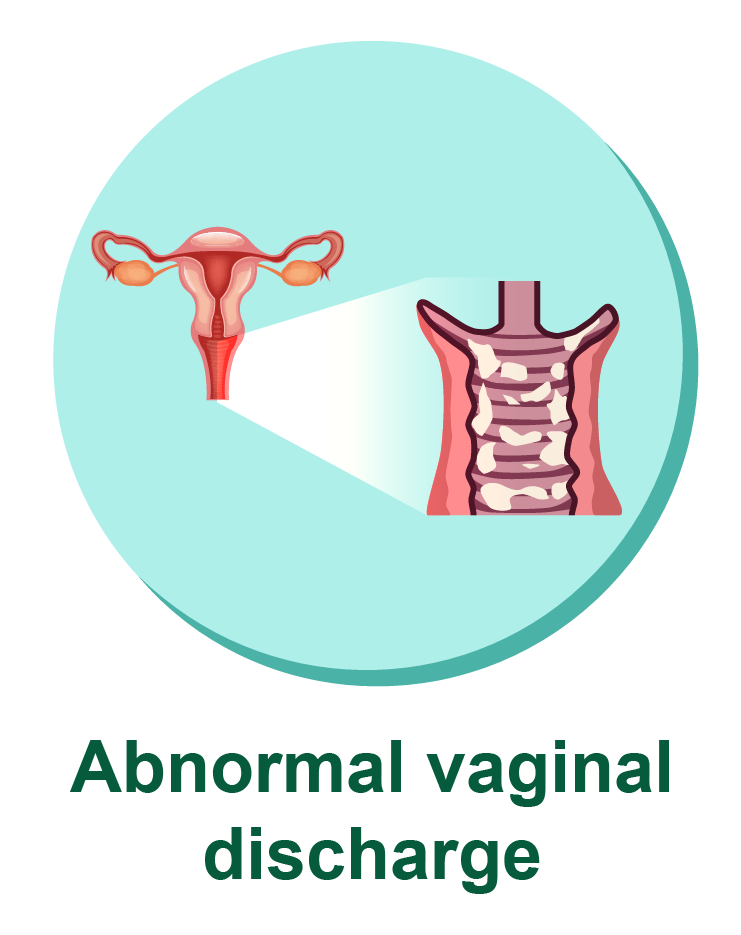

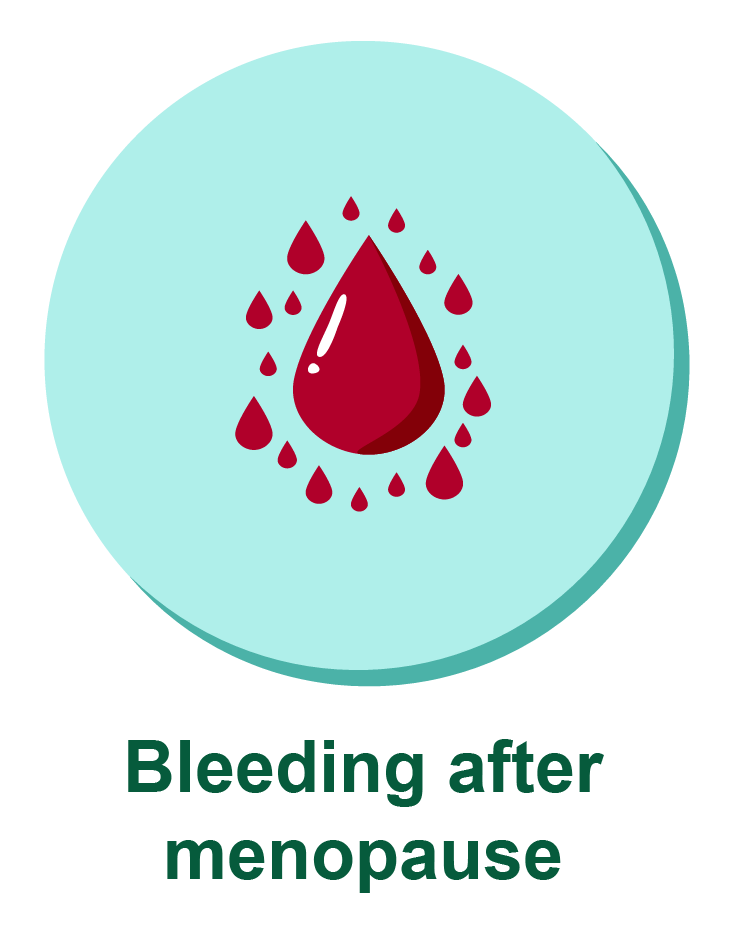
Treatments
Treatment for cervical cancer depends on the stage of the disease. Pre-cancerous cells can be removed simply by using a number of different treatments - the majority of which can be performed in an outpatient clinic, i.e. LEEP. For cases where cancer is present, the following treatment options may be applied: removal of the womb (hysterectomy), radiotherapy and chemotherapy. Cancer of the cervix is highly treatable, if it is detected and treated early. The 5-year survival rate for patients with early stage of cervical cancer is above 85%.







